Filter by
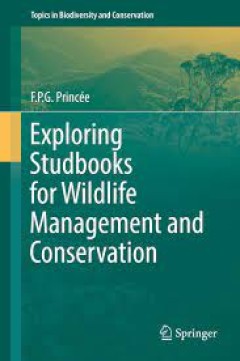
Exploring Studbooks for Wildlife Management and Conservation
Many endangered species of wild animals are managed in captivity through studbooks. In this book these data-rich resources are mined in innovative, integrated and statistically tested ways to maximise information gain for conservation practice – whether for captive or released/reintroduced or managed wild populations. This book is thus an important tool for all species managers, and for stude…
- Edition
- -
- ISBN/ISSN
- 978-3-319-50032-4
- Collation
- 79 b/w illustrations
- Series Title
- -
- Call Number
- -
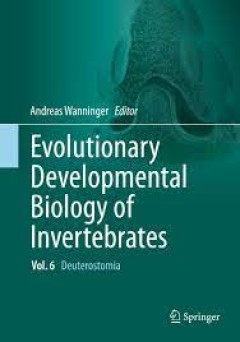
Evolutionary Developmental Biology of Invertebrates 6 Deuterostomia
This multi-author, six-volume work summarizes our current knowledge on the developmental biology of all major invertebrate animal phyla. The main aspects of cleavage, embryogenesis, organogenesis and gene expression are discussed in an evolutionary framework. Each chapter presents an in-depth yet concise overview of both classical and recent literature, supplemented by numerous color illustrati…
- Edition
- -
- ISBN/ISSN
- 978-3-7091-1856-6
- Collation
- 8 b/w illustrations, 69 illustrations in colour
- Series Title
- -
- Call Number
- -
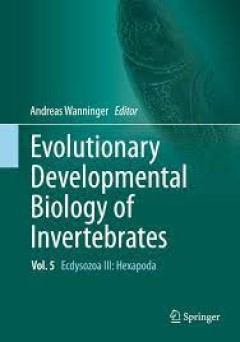
Evolutionary Developmental Biology of Invertebrates 5 Ecdysozoa III: Hexapoda
This multi-author, six-volume work summarizes our current knowledge on the developmental biology of all major invertebrate animal phyla. The main aspects of cleavage, embryogenesis, organogenesis and gene expression are discussed in an evolutionary framework. Each chapter presents an in-depth yet concise overview of both classical and recent literature, supplemented by numerous color illustrati…
- Edition
- -
- ISBN/ISSN
- 978-3-7091-1868-9
- Collation
- VII, 219
- Series Title
- -
- Call Number
- -
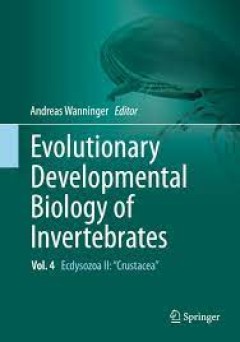
Evolutionary Developmental Biology of Invertebrates 4 Ecdysozoa II: Crustacea
This multi-author, six-volume work summarizes our current knowledge on the developmental biology of all major invertebrate animal phyla. The main aspects of cleavage, embryogenesis, organogenesis and gene expression are discussed in an evolutionary framework. Each chapter presents an in-depth yet concise overview of both classical and recent literature, supplemented by numerous color illustrati…
- Edition
- -
- ISBN/ISSN
- 978-3-7091-1853-5
- Collation
- 41 b/w illustrations, 43 illustrations in colour
- Series Title
- -
- Call Number
- -
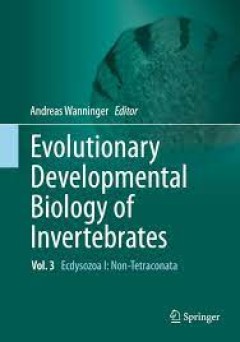
Evolutionary Developmental Biology of Invertebrates 3 Ecdysozoa I: Non-Tetra…
This multi-author, six-volume work summarizes our current knowledge on the developmental biology of all major invertebrate animal phyla. The main aspects of cleavage, embryogenesis, organogenesis and gene expression are discussed in an evolutionary framework. Each chapter presents an in-depth yet concise overview of both classical and recent literature, supplemented by numerous color illustrati…
- Edition
- -
- ISBN/ISSN
- 978-3-7091-1865-8
- Collation
- 14 b/w illustrations, 58 illustrations in colour
- Series Title
- -
- Call Number
- -

Evolutionary Developmental Biology of Invertebrates 2 Lophotrochozoa (Spiralia)
This multi-author, six-volume work summarizes our current knowledge on the developmental biology of all major invertebrate animal phyla. The main aspects of cleavage, embryogenesis, organogenesis and gene expression are discussed in an evolutionary framework. Each chapter presents an in-depth yet concise overview of both classical and recent literature, supplemented by numerous color illustrati…
- Edition
- -
- ISBN/ISSN
- 978-3-7091-1871-9
- Collation
- 12 b/w illustrations, 90 illustrations in colour
- Series Title
- -
- Call Number
- -
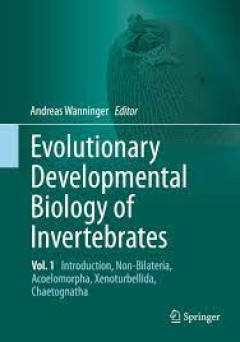
Evolutionary Developmental Biology of Invertebrates 1 Introduction, Non-Bila…
This multi-author, six-volume work summarizes our current knowledge on the developmental biology of all major invertebrate animal phyla. The main aspects of cleavage, embryogenesis, organogenesis and gene expression are discussed in an evolutionary framework. Each chapter presents an in-depth yet concise overview of both classical and recent literature, supplemented by numerous color illustrati…
- Edition
- -
- ISBN/ISSN
- 978-3-7091-1862-7
- Collation
- 21 b/w illustrations, 112 illustrations in colour
- Series Title
- -
- Call Number
- -
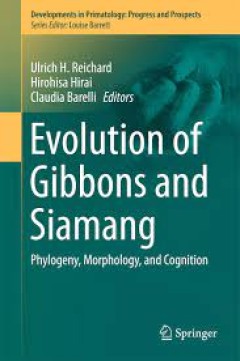
Evolution of Gibbons and Siamang Phylogeny, Morphology, and Cognition
This volume provides insight into gibbon diet and community ecology, the mating system and reproduction, and conservation biology, all topics which represent areas of substantial progress in understanding socio-ecological flexibility and conservation needs of the hylobatid family. This work analyzes hylobatid evolution by synthesizing recent and ongoing studies of molecular phylogeny, morpholog…
- Edition
- -
- ISBN/ISSN
- 978-1-4939-5614-2
- Collation
- 42 b/w illustrations, 18 illustrations in colour
- Series Title
- -
- Call Number
- -

Treatise on Acoustics
E.F.F. Chladni’s experiments and observations with sound and vibrations profoundly influenced the development of the field of Acoustics. The famous Chladni diagrams along with other observations are contained in Die Akustik, published in German in 1802 and Traité d’Acoustique, a greatly expanded version, published in French in 1809. This is the first comprehensive translation of the expand…
- Edition
- 1
- ISBN/ISSN
- 978-3-319-20360-7
- Collation
- XXXI, 227
- Series Title
- -
- Call Number
- -

Jakob von Uexküll: The Discovery of the Umwelt between Biosemiotics and Theo…
The book is a comprehensive introduction to the work of the Estonian-German biologist Jakob von Uexküll. After a first introductory chapter by Morten Tønnessen and a second chapter on Uexküll's life and philosophical background, it contains four chapters devoted to the analysis of his main works. They are followed by a vast eighth chapter which deals with the influence Uexküll had on other …
- Edition
- -
- ISBN/ISSN
- 978-94-017-9688-0
- Collation
- -
- Series Title
- -
- Call Number
- -
 Computer Science, Information & General Works
Computer Science, Information & General Works  Philosophy & Psychology
Philosophy & Psychology  Religion
Religion  Social Sciences
Social Sciences  Language
Language  Pure Science
Pure Science  Applied Sciences
Applied Sciences  Art & Recreation
Art & Recreation  Literature
Literature  History & Geography
History & Geography